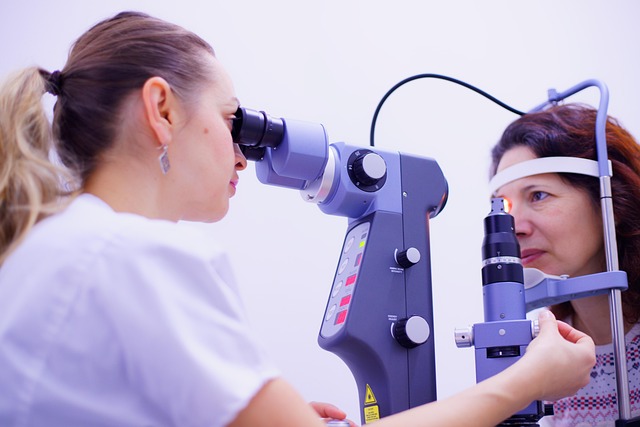Lasik Eye Surgery: Understanding Options, Costs, and Considerations
Laser eye surgery has revolutionized vision correction, offering millions of people worldwide an alternative to glasses and contact lenses. This advanced procedure reshapes the cornea—the clear front part of the eye—to correct refractive errors like nearsightedness, farsightedness, and astigmatism. With technological advancements continuing to improve outcomes and recovery times, laser eye treatments have become increasingly accessible and refined, making clear vision without corrective lenses a reality for many patients.

Affordable Eye Laser Treatments to Enhance Your Vision
Laser eye surgery has evolved significantly since its introduction, making vision correction more accessible and affordable for many patients. Modern procedures typically use advanced computer-guided lasers that precisely map the eye’s surface and make calculated adjustments with minimal healing time. These treatments can correct various vision problems in a single outpatient procedure, often taking just minutes per eye.
The affordability of eye laser treatments has improved through financing options, health savings accounts (HSAs), and flexible spending accounts (FSAs). Many clinics also offer payment plans that divide costs into manageable monthly installments. Additionally, some vision insurance plans now provide partial coverage or discounts for laser vision correction, though coverage varies significantly between providers and plans.
Types of Eye Laser Treatment: LASIK, PRK, and SMILE
Each type of laser eye surgery uses different techniques to reshape the cornea and correct vision problems, with varying approaches to creating access to the corneal tissue:
LASIK (Laser-Assisted In Situ Keratomileusis) remains the most common procedure, where surgeons create a thin flap in the cornea’s outer layer, reshape the underlying tissue with laser technology, and then reposition the flap. This procedure offers quick recovery times, with many patients experiencing improved vision within 24 hours.
PRK (Photorefractive Keratectomy) is often recommended for patients with thinner corneas. Unlike LASIK, PRK removes the outer corneal layer completely before reshaping the underlying tissue. While recovery takes longer—typically one to two weeks—PRK eliminates flap-related complications and may be safer for certain patients, particularly those with active lifestyles or high-impact professions.
SMILE (Small Incision Lenticule Extraction) represents newer technology where surgeons create a small lens-shaped tissue (lenticule) within the cornea using a femtosecond laser. This tissue is then removed through a tiny incision, changing the cornea’s shape with minimal disruption to its surface. SMILE may offer advantages like reduced dry eye symptoms and greater corneal strength after surgery.
Understanding Eye Laser Treatment Costs & Savings
The cost of laser eye surgery varies significantly based on several factors, including the procedure type, technology used, surgeon experience, facility quality, and geographical location. Understanding these cost components can help patients make informed decisions about their vision correction options.
Most laser eye surgeries are priced per eye, with the national average ranging from $1,500 to $3,000 per eye. Premium procedures using the latest technology may cost more, while some discount providers offer procedures for less. However, patients should carefully evaluate low-cost options, as they may indicate less experienced surgeons, older technology, or limited post-operative care.
| Procedure Type | Average Cost Per Eye | Technology Level | Typical Recovery Time |
|---|---|---|---|
| Traditional LASIK | $1,500-$2,500 | Standard | 1-2 days |
| Custom/Wavefront LASIK | $2,000-$3,000 | Advanced | 1-2 days |
| PRK | $1,500-$2,500 | Standard | 1-2 weeks |
| SMILE | $2,500-$3,500 | Newest | 1-3 days |
Prices, rates, or cost estimates mentioned in this article are based on the latest available information but may change over time. Independent research is advised before making financial decisions.
The long-term financial benefits can be substantial. Patients often save thousands of dollars over their lifetime by eliminating costs associated with glasses, contact lenses, lens solutions, and related accessories. For example, a person spending $500 annually on contact lenses and solutions might save $10,000 over 20 years after laser surgery, even accounting for the initial procedure cost.
Choosing Your Eye Surgeon & Clinic: Key Considerations
Selecting the right surgeon and clinic significantly impacts both safety and outcomes for laser eye surgery. Begin by verifying credentials—look for board-certified ophthalmologists who specialize in refractive surgery and have completed fellowship training in corneal and refractive procedures. Experience matters tremendously; surgeons who regularly perform laser eye surgeries typically achieve better results with fewer complications.
Technology is another crucial factor. Leading clinics invest in state-of-the-art diagnostic equipment and the latest laser systems. Ask about specific technologies like wavefront-guided treatments, femtosecond lasers for flap creation, and advanced corneal mapping systems. Modern equipment often provides more precise treatments with better visual outcomes.
Patient satisfaction rates and complication statistics offer valuable insights. Reputable clinics track their outcomes and should willingly share their success rates. Request to speak with previous patients or read verified testimonials. Additionally, evaluate the comprehensiveness of pre-operative assessments—thorough clinics conduct multiple tests to determine candidacy and customize treatment plans rather than offering a one-size-fits-all approach.
Your Prescription & Eye Laser Treatment Suitability
Not everyone qualifies for laser eye surgery, and understanding your prescription’s impact on eligibility is essential. Most procedures can correct myopia (nearsightedness) up to approximately -10.00 diopters, hyperopia (farsightedness) up to +6.00 diopters, and astigmatism up to 6.00 diopters. However, these ranges vary depending on other factors like corneal thickness and overall eye health.
Prescription stability is another crucial factor. Most surgeons require that your prescription hasn’t changed significantly (usually less than 0.50 diopters) in the past 12 months. This stability indicates that your refractive error has settled, making surgical outcomes more predictable and lasting. Patients under 21 years old often experience continuing vision changes, which may make them less suitable candidates.
Certain eye conditions can affect eligibility regardless of prescription. Keratoconus (progressive corneal thinning), severe dry eye syndrome, cataracts, advanced glaucoma, and certain retinal disorders may disqualify patients from standard laser procedures. Additionally, systemic conditions like uncontrolled diabetes, autoimmune diseases, and immunosuppressive medications can complicate healing and may require special consideration or alternative treatments.
This article is for informational purposes only and should not be considered medical advice. Please consult a qualified healthcare professional for personalized guidance and treatment.




